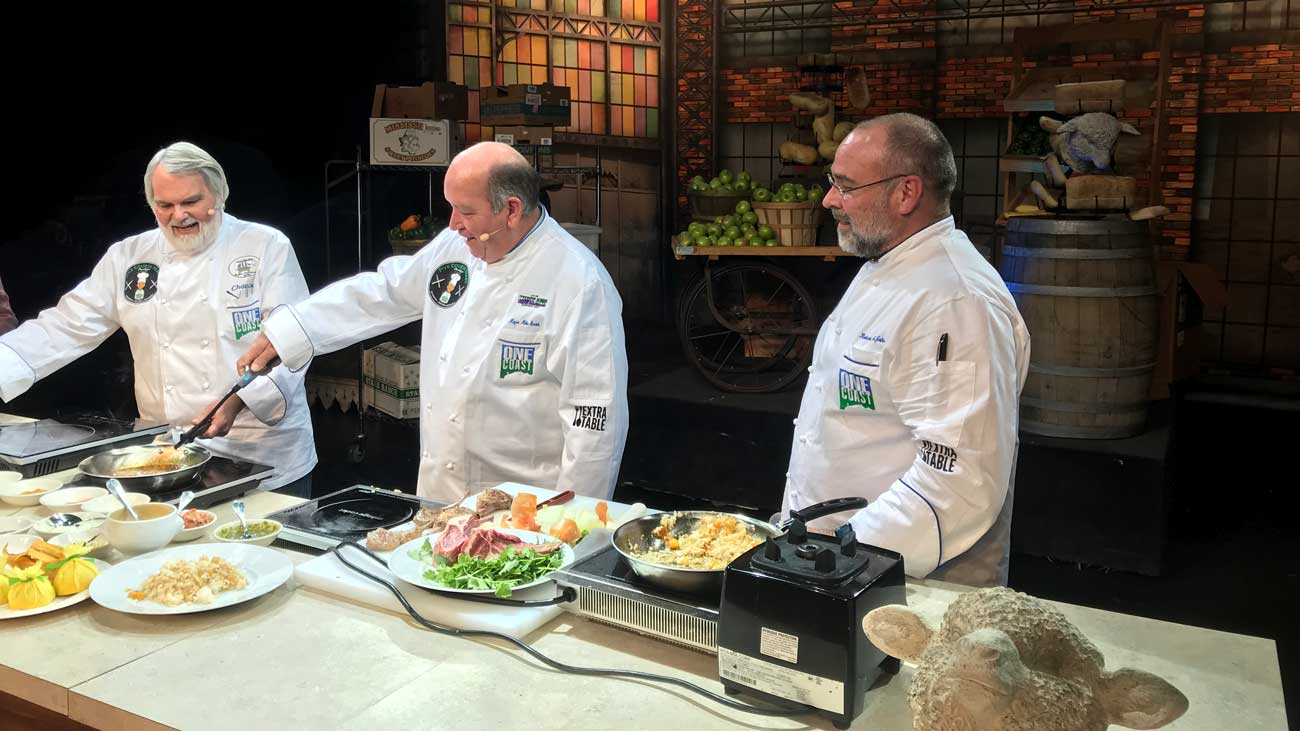“Your blood pressure is elevated,” said my doctor. “This is the second visit in a row. I’m going to give you six weeks and if you can’t get it down, you’re going to have to go on medication.”
“Elevated?” I said. “It’s elevated because I’m at the doctor’s office getting prodded and probed in every invasive way imaginable. Anyone’s heart rate would go up under these battlefield conditions.”
“See you in six weeks,” he said.
So here I am, a die-hard salt lover, trying to live on 1,400 mg of sodium per day. Sayonara soft drinks. Hello H2O.
We are trained from an early age to love salt. It’s in our genetic makeup. For thousands of years salt has been one of the primary elements in our lives. Our forefather’s forefathers used it to preserve proteins, and we use it as the primary seasoning in all of our foods.
Our mothers made us take baths in Epsom salt (actually, I know that Epsom salt is magnesium, but it has salt in the title, so I went for it), our coaches made us swallow salt tablets at football practice, we are taught to throw salt over our shoulders to counteract bad luck, and now we are told to eliminate as much of it as we can.
My friend Banks lives on cigarettes, black coffee, and salt. His body is currently being held together by tar and sodium with cheap convenience store coffee acting as the glue that binds all of the other parts together. He is a walking enigma. He’s never sick. He is one of those dump-a-ton-of-salt-on-his-food-before-he-tastes-it kinds of people. No one is telling him to lower his sodium intake.
Sea Salt vs Table Salt
One friend told me to switch to sea salt. Actually, I already use sea salt. Everyone should, but not for health reasons. Sea salt and table salt have basically the same chemical makeup (sodium and chloride), but sea salt tastes better. Table salt is more processed, has less minerals, and usually has iodine added.
Fleur De Sel is an entirely different matter. It, or lesser variations of gourmet salt, is what I use at home. Gourmet salts can be expensive (up to $40.00 per pound) but they make a huge difference in the outcome of a dish. Fleur De Sel, and its lesser cousins, should only be used when salting a finished product such as a salad, egg dish, or finished protein on the table.
Using expensive gourmet salts while baking or as a component of a dish that is yet-to-be cooked is a waste of money. In those instances, a good quality sea salt works fine.
For those who have never switched from table salt to sea salt or another gourmet salt, you have no idea what you are missing. When tasted side-by-side, table salt has a metallic, harsh taste. Whereas a good quality salt has a warm, clean, spread-all-over-your-tongue saltiness that is usually worth the extra money.
At the Purple Parrot Café we use a hand-mined Himalayan pink salt to add to our butter at the table. This salt was crystallized over 200 million years ago in ancient sea beds which had been covered by volcanic lava, protecting it from modern-day pollution. It is some of the purest salt on earth.
Though for the next six weeks, I’ll lay off the 200 million year-old salt, I’ll eliminate the sodium-laden soft drinks, and I’ll cut way back on my use of sea salt. In the meantime, you can catch me living vicariously through my friend Banks, the King of Salt.
Shrimp Harrison
2 lbs. 21-25 Shrimp, peeled and deveined
1 tsp Sea Salt
1 tsp Old Bay Seasoning
1/2 tsp Black Pepper, freshly ground
3 TBSP Olive Oil
2 cups Mushrooms, sliced
1 1/2 tsp Garlic, minced
1/2 cup White Wine
1 Tbl White Vinegar
1/4 cup Chicken Broth
1 cup Caramelized Onions
3/4 cup Unsalted Butter, cut into small cubes
2 Tbl Parsley. Freshly chopped
1 Recipe Really Rich Grits
Season the shrimp with the salt, Old Bay Seasoning and black pepper.
Place the olive oil in a large, heavy duty sauté pan over high heat. Heat the oil until it just begins to smoke. Carefully place the shrimp in the smoking hot pan. Allow the shrimp to cook without moving them for 2-3 minutes. Add the mushrooms and garlic and cook for 5 minutes. Using a slotted spoon, remove the shrimp and hold them in a warm place.
Add the white wine and vinegar and reduce until there is almost no liquid remaining. Add in the chicken broth and cook until only one Tablespoon remains. Add the butter cubes and stir constantly until butter has dissolved, being careful not to cook it too long (if you cook it too long at this stage, the butter will separate).
Add the caramelized onions and warm shrimp back into the pan and stir so that the sauce coats the shrimp. Remove from heat and stir in parsley.
Place 3/4 cup of cooked grits into each serving dish, top the grits with the shrimp and serve immediately.
Yield: 8-10 servings
Caramelized Onions*
2 Tbl Unsalted Butter
3 cups Yellow Onion, thinly slice
1 tsp Kosher Salt
Melt butter over medium-low heat in a large sauté pan. Add onions and salt to the melted butter. Cook onions for 15-20 minutes, stirring them often to prevent burning. The onions should continue cooking until a rich brown color is obtained.
Really Rich Grits
1 quart heavy whipping cream
1 cup grits
2 tsp salt
1 tsp black pepper
1 bay leaf
1/2 cup unsalted butter cut into cubes
1 cup parmesan cheese, grated
Preheat oven to 275 degrees
Stir together the cream, grits, salt pepper and bay leaf.
Place the mixture in an oven proof baking dish and cover. Bake for2 1/3-3 hours, stirring every 30 minutes.
Once the grits are soft and creamy, stir in the butter cubes and parmesan cheese. Serve immediately.



